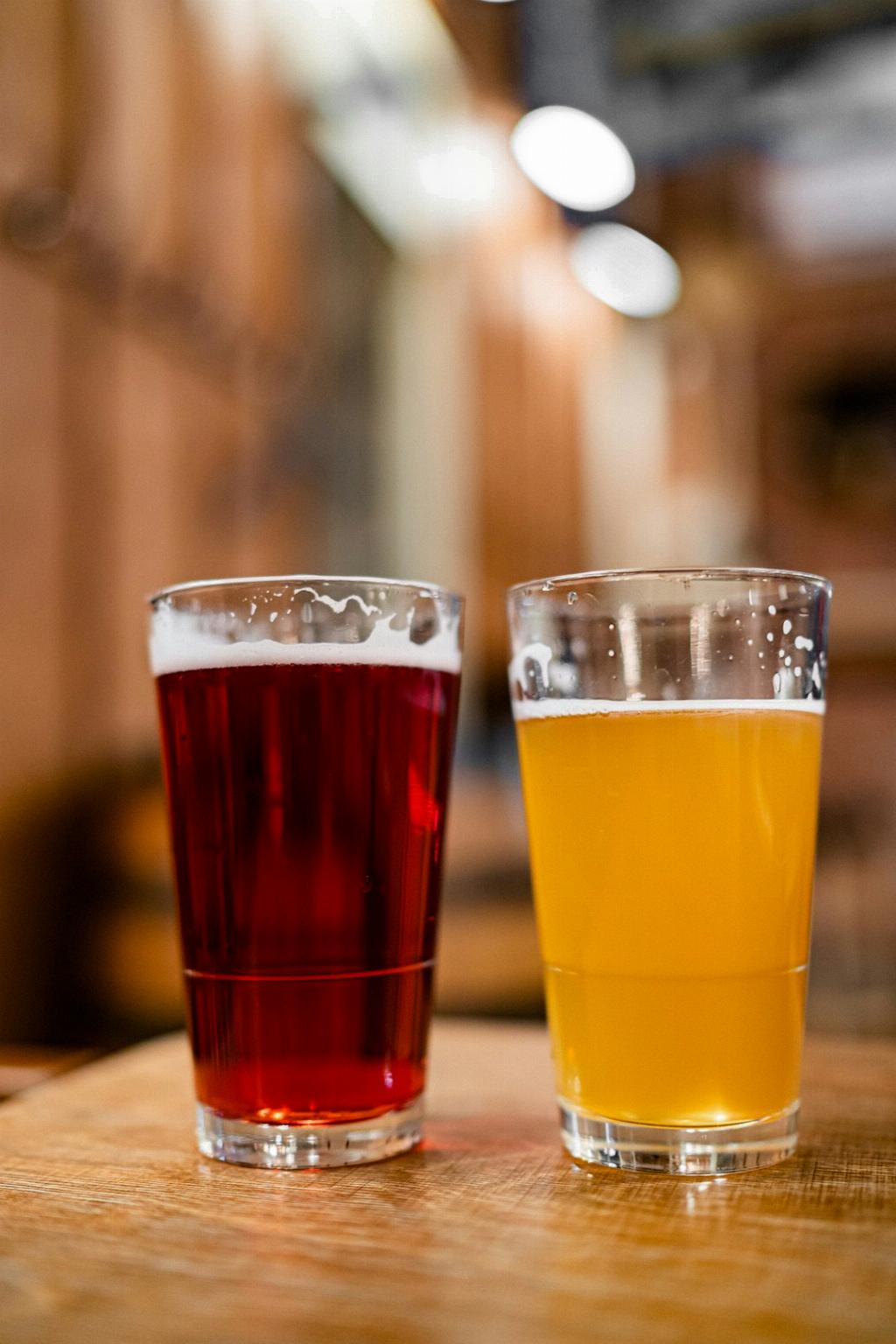When it comes to Belgian beer styles, there are numerous options to explore, each with its own unique characteristics and flavors. Among these styles, two that often cause confusion are Golden Ale and Tripel. While they share similarities, it is important to understand their distinctions to fully appreciate and enjoy these brews.
1. Origins and Background
Golden Ale and Tripel both trace their roots back to Belgium, a country renowned for its rich brewing heritage. Tripel, which emerged from Trappist monasteries, has a longer history dating back to the 19th century. On the other hand, Golden Ale is a more recent invention that arose during the craft beer movement, inspired by Belgian brewing traditions.
2. Fermentation and Yeast
One of the key differences between Golden Ale and Tripel lies in their fermentation process and the type of yeast used. Tripels are often brewed with a specific strain of Belgian yeast known for its fruity esters and spicy phenols, lending unique flavors to the beer. Golden Ales, while still utilizing Belgian yeast, more prominently feature the fruity aspect of the yeast character, often with a milder spice profile.
3. Strength and Alcohol Content
Another differentiating factor between Golden Ale and Tripel is their strength and alcohol content. Generally, Tripels are stronger and higher in alcohol than Golden Ales. Tripels typically range from 8-10% ABV, while Golden Ales tend to be slightly lower, averaging between 6-8% ABV. This disparity in alcohol content contributes to variations in flavor and overall perception of the two styles.
4. Malt Profile and Bitterness
While both styles exhibit a prominent malt presence, the malt profile and level of bitterness differ. Tripels often have a more pronounced malt character, providing a rich and robust backbone to balance the beer’s strength. In contrast, Golden Ales generally showcase a lighter malt profile, allowing the fruity yeast flavors to shine. Additionally, Golden Ales tend to have lower bitterness compared to the more balanced bitterness found in Tripels.
5. Flavor Profile
Due to variations in ingredients and brewing techniques, Golden Ales and Tripels offer distinct flavor profiles. Tripels are characterized by their complex blend of fruity and spicy flavors. Expect notes of banana, clove, bubblegum, and even a hint of pepper. Golden Ales, on the other hand, lean more towards fruity esters with flavors of tropical fruits, citrus, and perhaps a touch of honey-like sweetness.
6. Body and Carbonation
In terms of mouthfeel, Tripels generally have a fuller body and a higher level of carbonation. This combination creates a lively and effervescent sensation on the palate, enhancing the overall drinking experience. Golden Ales, while still exhibiting a moderate level of carbonation, tend to have a slightly lighter body, resulting in a smoother and more refreshing feel.
7. Pairing with Food
Both Golden Ales and Tripels can be delightful companions to various dishes. The fruity and spicy characteristics of Tripels make them a great match for stronger flavors, such as spicy seafood, creamy cheeses, or even rich desserts like crème brûlée. Golden Ales, with their lighter body and tropical fruit notes, pair well with lighter fare like salads, grilled chicken, or even sushi.
8. Glassware and Presentation
To truly savor the nuances of these styles, it’s worth considering the appropriate glassware. Tripels are often served in tulip glasses, which help concentrate the aromas and maintain the beer’s frothy head. Golden Ales can be enjoyed in similar glassware, such as a stemmed tulip or a snifter, allowing the beer’s aromas to flourish.
9. Availability and Brewing Tradition
While both styles have gained popularity worldwide, Tripels have a stronger association with traditional Belgian brewing and are often produced by Trappist breweries. Golden Ales, on the other hand, have found their place in the craft beer movement and can be brewed by a wider range of breweries. As a result, Golden Ales may offer more experimentation and creativity in terms of flavors and ingredients.
10. Personal Preference
Ultimately, the difference between Golden Ale and Tripel lies in personal preference. Some beer enthusiasts may gravitate towards the robust and complex characteristics of Tripels, while others may prefer the lighter and fruit-forward profiles of Golden Ales. Experimenting with both styles is the best way to determine which one resonates most with your taste buds.
11. Explore and Enjoy
As with any beer style, the key to fully understanding the difference between Golden Ale and Tripel is to explore and sample different examples of each. All our taste buds are unique, and what appeals to one person may not necessarily appeal to another. The joy lies in the journey of discovering new flavors and finding the styles that captivate your senses.

12. In Conclusion
Golden Ale and Tripel, though related, have distinct characteristics that set them apart. From their origins and yeast choices to their alcohol content, flavor profiles, and mouthfeel, each style offers a unique experience. Exploring these styles will not only deepen your appreciation for Belgian beer but also broaden your overall beer knowledge. So, the next time you encounter a Golden Ale or Tripel, take a moment to consider their differences and let your taste buds guide you to your preferred pint.
